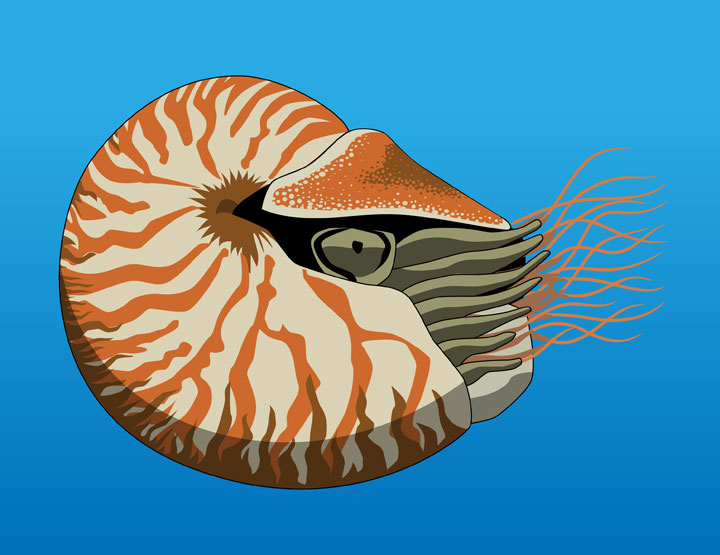Nautilus Shell
This animal is often thought of as a living fossil. The first nautilus-like creatures appeared on earth around three or four hundred million years ago in the Palaeozoic era, and haven’t changed much since then. The Nautilus is a member of the most advanced group of molluscs: the cephalopods. Squid and octopus are close evolutionary relatives but the nautilus is the only kind of cephalopod that still has a true external shell.
The tentacled head extends from the shell of the living nautilus. Unlike many other molluscs, the creature is not fully enclosed by its shell, and so cannot hide when danger threatens. The inside of the shell is filled with pearly chambers, which fill with gas and help the nautilus to float. Buoyancy is controlled by taking in or letting out water and the creature propels itself backwards through the water using a jet of water, which it squirts from a siphon.

Length:12cm

Length:12cm

This animal is often thought of as a living fossil. The first nautilus-like creatures appeared on earth around three or four hundred million years ago in the Palaeozoic era, and haven’t changed much since then. The Nautilus is a member of the most advanced group of molluscs: the cephalopods. Squid and octopus are close evolutionary relatives but the nautilus is the only kind of cephalopod that still has a true external shell.
The tentacled head extends from the shell of the living nautilus. Unlike many other molluscs, the creature is not fully enclosed by its shell, and so cannot hide when danger threatens. The inside of the shell is filled with pearly chambers, which fill with gas and help the nautilus to float. Buoyancy is controlled by taking in or letting out water and the creature propels itself backwards through the water using a jet of water, which it squirts from a siphon.





















